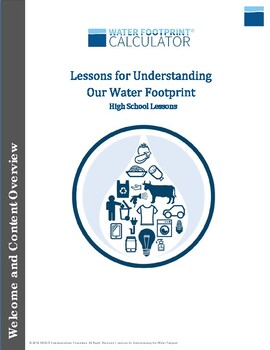- PDF
Description
This is an overview of the Water Footprint Calculator lesson plans. You can find all of the free lesson plans at Watercalculator.org: https://www.watercalculator.org/resource/water-footprint-lessons/
“Lessons for Understanding Our Water Footprint” will help students recognize that water is a limited resource that needs to be conserved. These lessons will promote conversation about how students’ food choices and shopping habits have a larger impact on their water consumption than they may realize.
High School Lessons: https://www.watercalculator.org/resource/high-school-lessons/
Middle School Lessons: https://www.watercalculator.org/resource/middle-school-lessons/
These interactive lessons include:
Six engaging lessons, three for high school and three for middle school, that provide students with an in-depth understanding of key water issues.
A range of teaching strategies, including presentations, videos, activities, assessments, portfolio assignments, technology integration and community extensions.
Worksheets that engage students in real-world learning exercises.
Standards alignment with the Texas Essential Knowledge and Skills (TEKS); Common Core State Standards (CCSS) for ELA/Literacy and Mathematics; Next Generation Science Standards (NGSS); and the Cloud Education for Sustainability (EFS) Standards & Performance Indicators.
You can find all of these free lesson plans at Watercalculator.org: https://www.watercalculator.org/resource/water-footprint-lessons/





